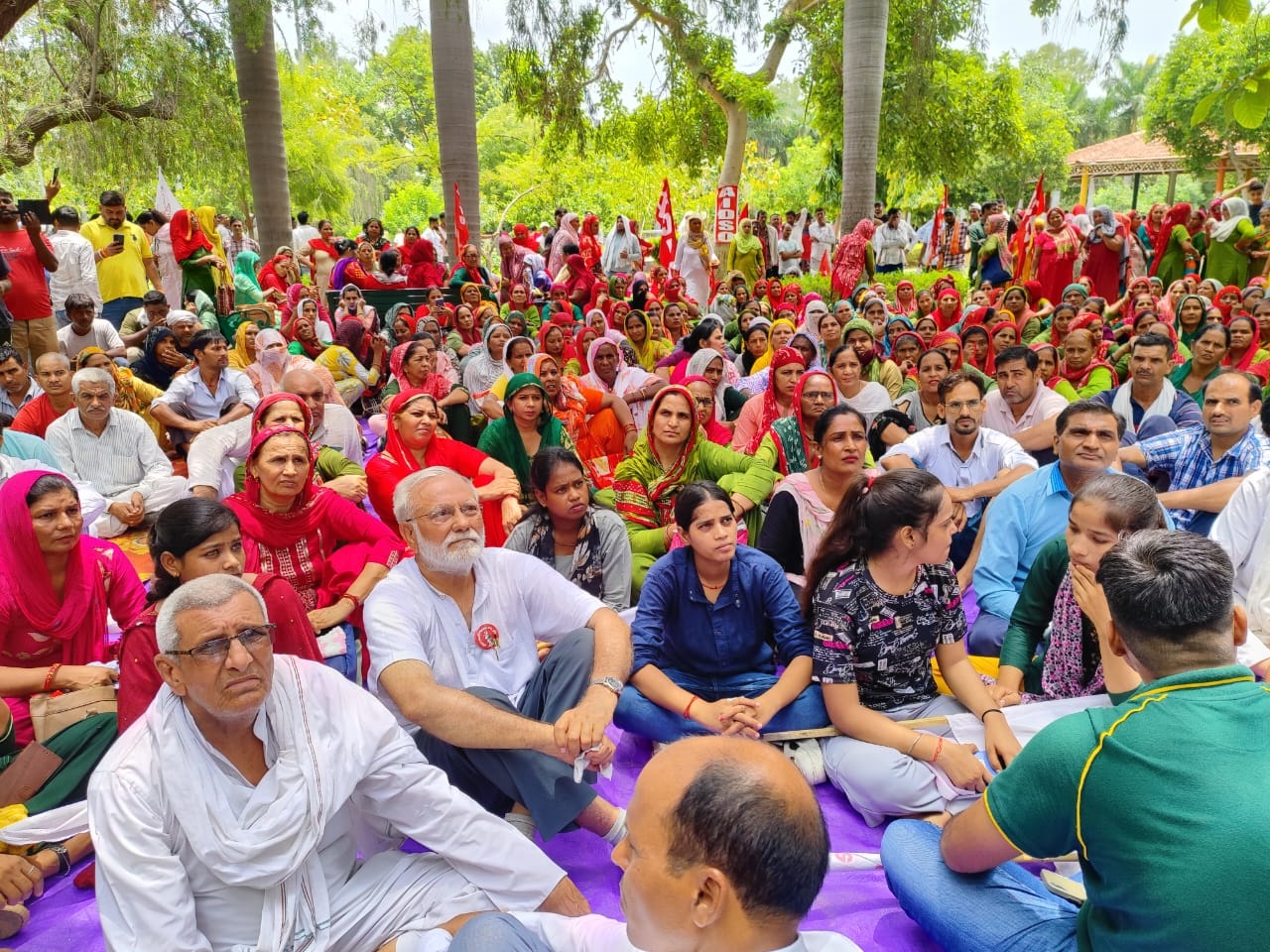
Vijoo Krishnan
INDIA witnessed a historic General Strike called by the Central Trade Unions and Independent Sectoral Federations on July 9, 2025. It is reported that more than 250 million workers from across the country came out in an outpouring of anger against the anti-worker labour codes, privatisation, and the BJP-led NDA government’s facilitation of corporate loot. The working class also raised the primary demands of the peasantry, agricultural workers and rural workers.
A positive take away from this General Strike was the massive protests on the same day by the Samyukta Kisan Morcha and the agricultural workers’ unions, who raised specific demands such as remunerative prices, increased workdays, and higher wages under MGNREGA, as well as calling for the scrapping of the labour codes, the privatisation of electricity, and a protest against corporate loot of land and natural resources. The slew of Free Trade Agreements and impact on the peasantry as well as the working class and the MSME sector was also a point of campaign. Roads were blocked and rail was stopped at many places. Rural India came out in unison with the working class realising very well that the set of policies being implemented under the neo-liberal paradigm are detrimental to the lives and livelihoods of all working people.
The victory of the Strike is all the more significant given the fact that the original date and preparations were for May 20, 2025 which had to be rescheduled due to the unfortunate incidents at Pahalgam. The momentum built prior to that could not just be kept alive, it could be actually further accelerated countering the war-mongering and polarising campaign of the BJP-RSS. Undoubtedly, amidst the overwhelming distress of the masses, the workers and peasants were clear that the war had to be waged against the neoliberal policies and the ruling anti-people governments.
In Kerala on July 6, the Samyukta Kisan Morcha held torchlight processions at 1629 centres in which over 40,000 participated despite inclement weather. In West Bengal, picketing was held at 481 centres spread across the state in 346 blocks. Roads were blocked at 340 centres and rail was stopped at six important centres. Tripura saw the farmers and agricultural workers along with the Tripura Ganamukti Parishad, coming out in support of the Strike which turned into a bandh-like situation. Many leaders were arrested. In Karnataka, the anger against the repression on the farmers’ protest against land acquisition at Devanahalli was channelised into state-wide protest actions under the banner of Samyukta Horata Karnataka and also reflected in the protests on July 9. The active support of the working class in this struggle, leading to its eventual victory and scrapping of land acquisition points to the importance of strengthening worker-peasant united actions. Across Tamilnadu, railway picketing and protest at central government offices were jointly held by AIKS and AIAWU along with AIDWA, SFI and DYFI. Colourful images of massive blocking of roads and rail have been received from all districts of the state. In Pondicherry, Kisan Sabha joined the trade unions in blocking roads. In Maharashtra, across 25 districts at more than 70 centres the highways were blocked along with fraternal mass organisations.
Rajasthan saw farmers and agricultural workers under the banner of AIKS and AIAWU had picketing as well as joint protests with the trade unions. In Jharkhand, roads were blocked in different districts despite rain in some areas. The Ranchi-Tata National Highway was blocked for nearly three hours, bringing all vehicular traffic except ambulances to a standstill.
In Himachal Pradesh, AIKS and the Apple Farmers’ Federation of India had massive protests and joined the working class actions across the state. In Punjab, rural areas in many districts like Ropar, Sangrur, Patiala, Tarn Taran, and Ludhiana saw farmers out on the streets blocking traffic. Punjab Kisan Sabha was active in protests in 64 Sub-Divisions of the state. In Bihar, a bandh-like situation was prevalent in many districts with all constituents of the SKM, AIKS and AIAWU actively working for making the strike a success. Uttar Pradesh also witnessed protests across the state with big protests by the Kisan Sabha and SKM at 40 centres in districts like Ballia, Etawah, Sultanpur. Haryana Kisan Sabha joined the workers to make the strike successful in 13 districts. In Madhya Pradesh, Gwalior was brought to a standstill, farmers came out in big numbers at Morena, Bhind and roads were blocked in many other parts of the state. Gujarat saw the Kisan Sabha coming out together with scheme workers in many places like Sabarkantha, Rajkot, etc. Assam saw the Krishak Sabha joined the protests of the trade unions and the important Silchar-Aizawl Highway was blocked by farmers. The Jammu Kashmir Kisan Tehreek and Apple Farmers’ Federation of India had protests in Srinagar. Across districts of Andhra Pradesh and Telangana, the AIKS and AIAWU, along with SKM constituents blocked roads and held picketing. The AIKS and AIAWU leaders participated in the protest at Jantar Mantar.
The support extended by the SKM and the platform of agricultural workers’ organisations has ensured massive participation of the peasantry and rural workers in the widespread protests, including the road and rail blockade across rural India. The response on July 9, 2025 by the working people has given a new confidence for launching massive worker-peasant united actions against the pro-corporate, anti-people neoliberal economic policies. The rock-solid unity of workers and peasants will work to ensure pro-people alternatives to imperialist-driven economic policies and resist corporate loot of people’s wealth. July 9 gave a loud and clear message to the ruling classes: the productive classes shall not accept corporate loot; they shall resist with all their might any attempt to curb their hard-won rights.


